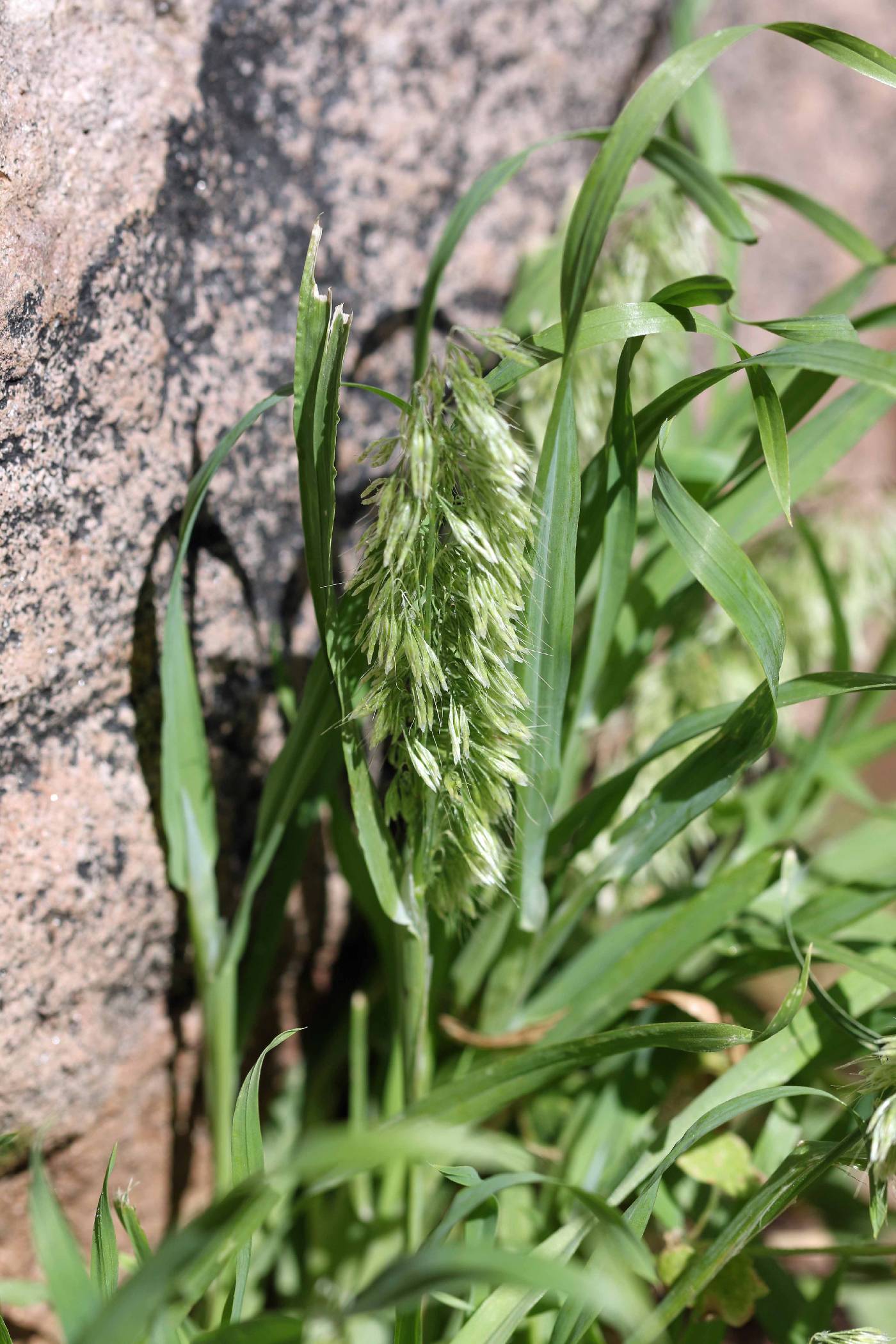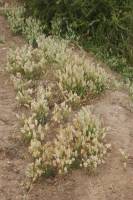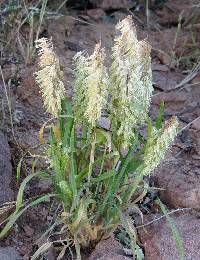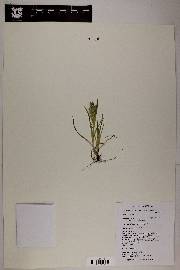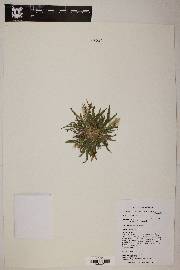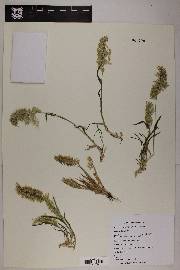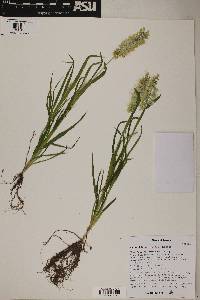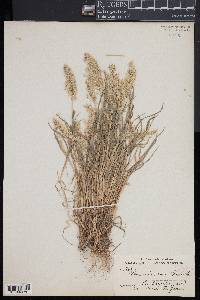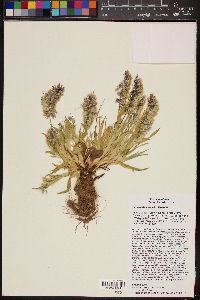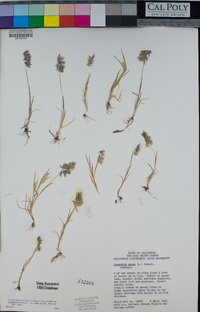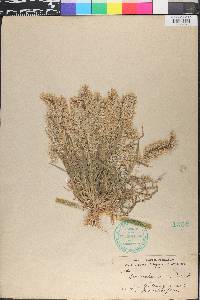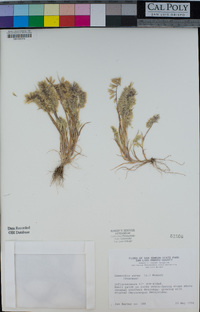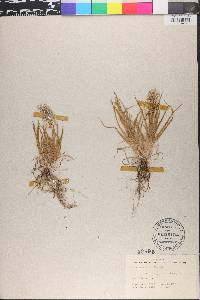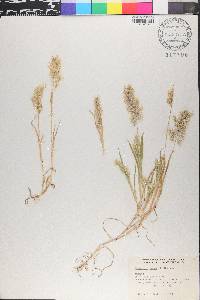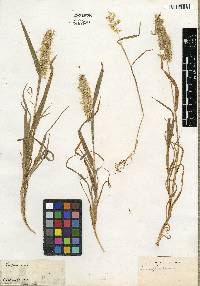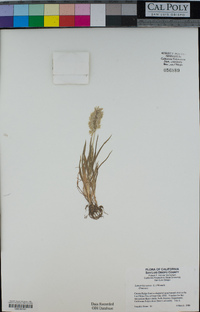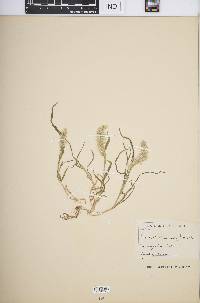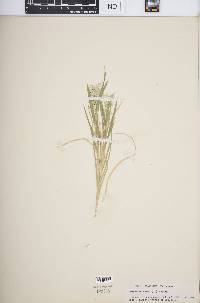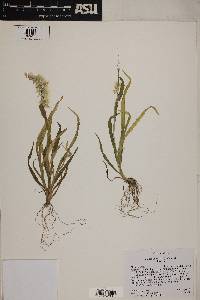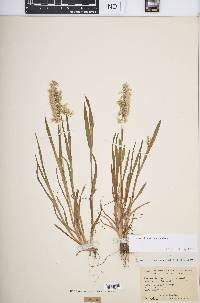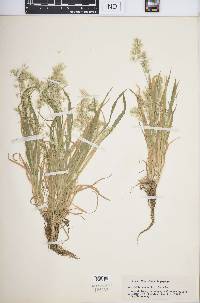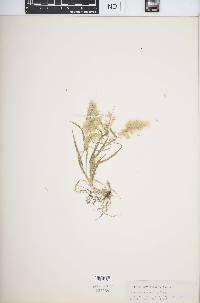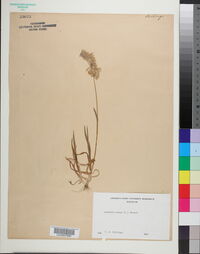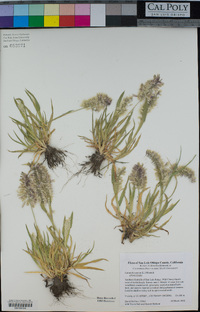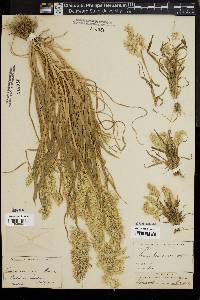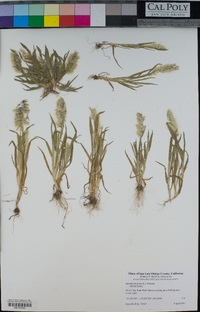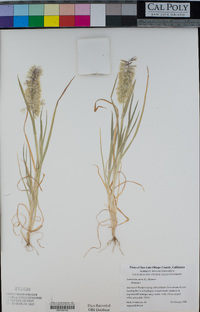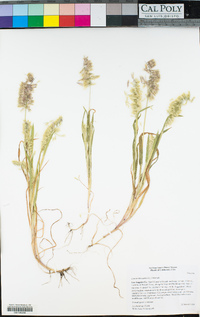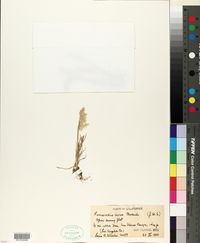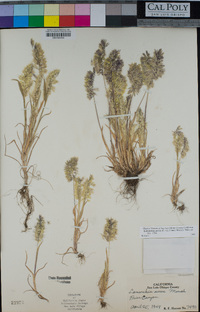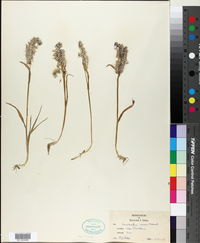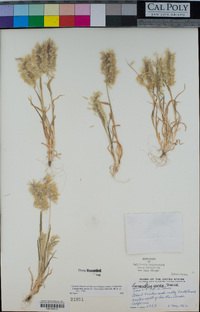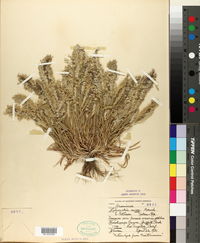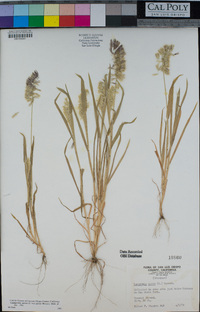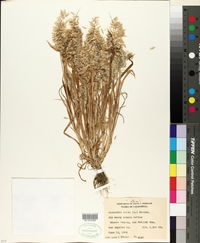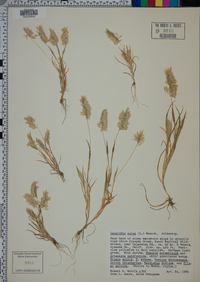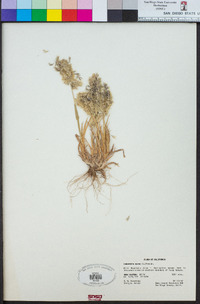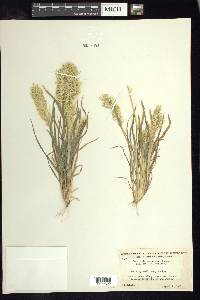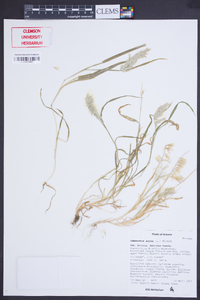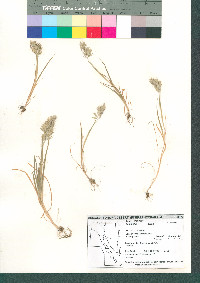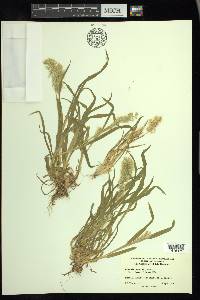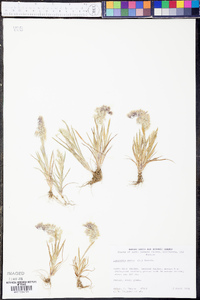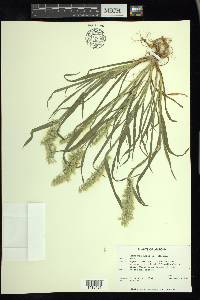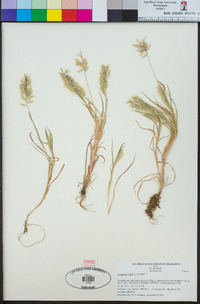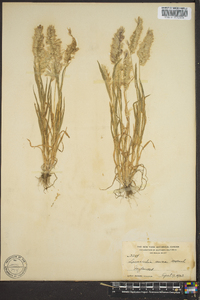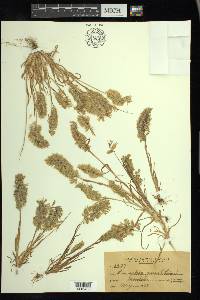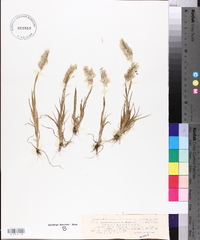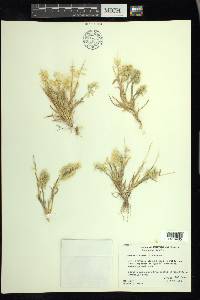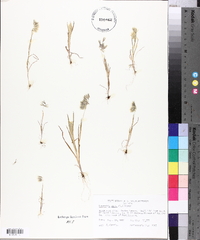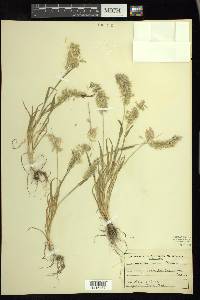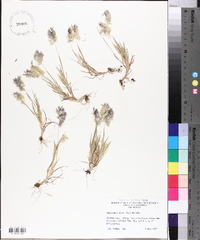Lamarckia aurea
|
|
|
|
Family: Poaceae
Golden-Top Grass, more...goldentop grass, golden-top, goldentop
[Achyrodes aureum (L.) Kuntze, moreCynosurus aureus L.] |
Culms (5)10-40 cm. Ligules 3-10 mm; blades 2.5-11(20) cm long, 2.5-7.5 mm wide. Panicles 2-8 cm long, 0.9-3.2 cm wide; branches 1-2 cm, with a few scattered, whitish hairs. Fertile spikelets 2.6-4.2 mm; lower rachilla internodes about 1 mm, glabrous; upper rachilla internodes 1.4-2.2(2.6) mm, puberulent or glabrous, sometimes scabrous; glumes 2.6-4.2 mm, bisexual florets 2.4-3 mm, minutely bifid, teeth shorter than 0.2 mm, apices awned, awns 5-7.2 mm; anthers 0.4-0.7 mm; rudimentary florets 0.4-0.6 mm, awns 4-5(7) mm. Sterile spikelets 6-9 mm; lemmas 1-2 mm. Caryopses 1-2 mm. 2n = 14. Lamarckia aurea grows on open ground, rocky hillsides, and in sandy soil, at elevations from sea level to 700 m. Within the Flora region, it is known only from the southwest. It is an attractive, but rather weedy species. Dr. David Bogler, USDA NRCS PLANTS Database Annuals, Aquatic, leaves emergent, Terrestrial, not aquatic, Stems nodes swollen or brittle, Stems erect or ascending, Stems geniculate, decumbent, or lax, sometimes rooting at nodes, Stems caespitose, tufted, or clustered, Stems terete, round in cross section, or polygonal, Stems branching above base or distally at nodes, Stem internodes hollow, Stems with inflorescence less than 1 m tall, Stems, culms, or scapes exceeding basal leaves, Leaves mostly cauline, Leaves conspicuously 2-ranked, distichous, Leaves sheathing at base, Leaf sheath mostly closed, Leaf sheath smooth, glabrous, Leaf sheath or blade keeled, Leaf sheath and blade differentiated, Leaf blades linear, Leaf blades lanceolate, Leaf blades 2-10 mm wide, Leaf blades mostly flat, Leaf blades mostly glabrous, Ligule present, Ligule an unfringed eciliate membrane, Inflorescence terminal, Inflorescence a contracted panicle, narrowly paniculate, branches appressed or ascending, Inflorescence a dense slender spike-like panicle or raceme, branches contracted, Inflorescence solitary, with 1 spike, fascicle, glomerule, head, or cluster per stem or culm, Inflorescence single raceme, fascicle or spike, Inflorescence with 2-10 branches, Flowers bisexual, Spikelets pedicellate, Spikelets laterally compressed, Spikelet less than 3 mm wide, Spikelets with 1 fertile floret, Spikelets with 8-40 florets, Spikelets 1-4 in short bristly fascicles, Spikelets in groups of 7, 1 fertile, the others sterile, Spikelets bisexual, Inflorescence disarticulating between nodes or joints of rachis, rachis fragmenting, Spikelets disarticulating below the glumes, Spikelets falling with parts of disarticulating rachis or pedicel, Spikelets in dense head-like clusters, Spikelets secund, in rows on one side of rachis, Rachilla or pedicel glabrous, Glumes present, empty bracts, Glumes 2 clearly present, Glumes equal or subequal, Glumes equal to or longer than adjacent lemma, Glume equal to or longer than spikelet, Glumes 1 nerved, Lemmas thin, chartaceous, hyaline, cartilaginous, or membranous, Lemma 5-7 nerved, Lemma glabrous, Lemma apex acute or acuminate, Lemma distinctly awned, more than 2-3 mm, Lemma with 1 awn, Lemma awn less than 1 cm long, Lemma awned from tip, Lemma awns straight or curved to base, Lemma margins thin, lying flat, Lemma straight, Palea present, well developed, Palea membranous, hyaline, Palea about equal to lemma, Palea longer than lemma, Palea 2 nerved or 2 keeled, Stamens 3, Styles 2-fid, deeply 2-branc FNA 2007, Gould 1980 Common Name: goldentop grass Duration: Annual Nativity: Non-Native Lifeform: Graminoid General: Low annual with soft stems, mostly 10-40 cm tall. Vegetative: Sheaths usually keeled, ligules membranous 3-10 mm or longer on upper leaves, blades flat, 2.5-11 cm long, 2.5-7.5 mm wide. Inflorescence: Panicle 2-8 cm long, contracted, dense, one-sided; branches 1-2 cm with a few scattered, whitish hairs; spikelets in peduncled fascicles, terminal spikelet of each fascicle fertile, each 2.5-4.5 mm; glumes 2.5-4.5 mm; fertile spikelet with single fertile floret and rudimentary floret borne on a long bristle-like stipe, both the lemma of the fertile and rudimentary florets with a delicate awn 5-10 mm long, similar glumes 2.5-4.5 mm. Ecology: Found in open ground, rocky slopes, and sandy soils, usually in disturbed sites below 4,000 ft (1219 m); flowers spring. Notes: The golden panicle with its distinctive pattern of spikelets helps to distinguish this species. Ethnobotany: Taken for headaches. Etymology: Lamarckia is named for the French botanist Jean Baptiste Antoine Pierre Monet de Lamarck (1774-1829, and aurea means golden. Synonyms: Cynosurus aureus Editor: SBuckley, 2010 |
|
|
|

